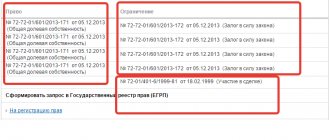When can you sign an agreement?
According to Art. 38 of the RF IC, spouses can draw up an agreement on the division of property during marriage, divorce proceedings or after receiving a divorce certificate. The exception is cases when there are disputes between the parties or the determination of shares is required - here it is necessary to go to court. If the cost of the claim does not exceed 50,000 rubles, the application is submitted to the magistrate court, in other cases - to the district court.
- The division of the common property of the spouses can be made both during the marriage and after its dissolution at the request of any of the spouses, as well as in the event of a claim by a creditor to divide the common property of the spouses in order to foreclose on the share of one of the spouses in the common property of the spouses.
- The common property of the spouses can be divided between the spouses by their agreement. An agreement on the division of common property acquired by spouses during marriage must be notarized.
- In the event of a dispute, the division of the common property of the spouses, as well as the determination of the spouses' shares in this property, are carried out in court. When dividing the common property of spouses, the court, at the request of the spouses, determines what property is to be transferred to each of the spouses. If one of the spouses is transferred property the value of which exceeds the share due to him, the other spouse may be awarded appropriate monetary or other compensation.
- The court may recognize the property acquired by each of the spouses during the period of their separation upon termination of family relations as the property of each of them.
- Items acquired solely to meet the needs of minor children (clothing, shoes, school and sports supplies, musical instruments, children's library and others) are not subject to division and are transferred without compensation to the spouse with whom the children live. Contributions made by spouses at the expense of the spouses' common property in the name of their common minor children are considered to belong to these children and are not taken into account when dividing the spouses' common property.
- In the case of division of the common property of the spouses during the marriage, that part of the common property of the spouses that was not divided, as well as the property acquired by the spouses during the subsequent marriage, constitute their joint property.
- A three-year statute of limitations applies to the claims of spouses for the division of common property of spouses whose marriage is dissolved.
The agreement must be notarized. Its registration is also possible in cases where the spouses have children or one of them refuses to divorce through the registry office, and the second has to file a claim for divorce in court. Here the situation looks like this:
- Dissolution of family relationships is carried out in court.
- At the same time, the spouses enter into an amicable agreement on division and have it certified by a notary.
Another exception is being in an unofficial marriage (cohabitation) - then legally the parties do not have common property, which means it will not be possible to divide it. In such a situation, you will have to solve the problem orally or through the court.
Thus, when dividing property, several factors need to be taken into account:
- Condition. It is concluded only with mutual consent. Any disputes are resolved in court.
- Assurance. An agreement without notarization has no legal force.
- If it is necessary to determine shares in common property at the request of a creditor, the procedure is carried out in court.
- If the spouses lived separately for some time and acquired property with their own money, the court may recognize it as individual property that cannot be divided. To do this, citizens must provide checks and receipts confirming payment at their own expense, and also prove that they actually lived separately during the purchase period.
- It is impossible to divide things and valuable items that were purchased during marriage in the interests of common minor children - neither through court nor by agreement.
- If the parties divided the property, but subsequently continued to live together and made new valuable purchases, they will be considered joint property. If they wish, they will also be able to divide everything in the future.
- If part of the property has not been divided, it continues to be considered joint property.
In the absence of disputes, spouses or former spouses can visit a notary and sign an agreement determining who will receive specific property and in what amount.
Need a lawyer
Qualified assistance from a lawyer in family housing disputes will help you solve any problems easily and quickly. You can ask a consultation question or seek help from experienced family law lawyers.
In addition, a competent lawyer for division and divorce:
- Divorce the marriage in the absence of the other spouse or without your participation, as well as if either party lives in another city or another country;
- Resolves a dispute about children in a divorce related to determining their place of residence or the procedure for communicating with them;
- Protect rights and interests when collecting alimony, collecting them in an increased amount or in a fixed amount;
- He will help with the division of the spouses’ property by including disputed objects in the array to be divided or by providing assistance in the division of debts.
- Due to constant changes in legislation, regulations and judicial practice, sometimes we do not have time to update the information on the site
- In 90% of cases, your legal problem is individual, so independent protection of rights and basic options for resolving the situation may often not be suitable and will only lead to a more complicated process!
This is important to know: Benefit for caring for a disabled person of group 1: how to apply, amount of benefit
Therefore, contact our lawyer for a FREE consultation right now and get rid of problems in the future!
AGREEMENT on the division of common property of spouses
g. _________________ “____”_________________ ____ g.
A citizen residing at the address: _________________________________, on the one hand, and a citizen _______________________________________, residing at the address: _________________________________, on the other hand, married, registered “___”_________ ____ year ____________________ (actual record No. ____________ dated “____”_____________ ____ year ), hereinafter referred to as the “Parties” (“Spouses”), in accordance with Art. 38 RF IC have entered into this Agreement as follows: 1.
During the marriage, by the time of conclusion of this Agreement, the Parties had acquired the following property: a) _________ - a one-room apartment with a total area of ___________ square meters. m, located at the address: _______________________________________ (Certificate of ownership of housing No. ___________ dated “____” __________________ ____); b) car: model ____________, registration.
number: __________, body number: __________________, _______ year of manufacture (PTS ______________________, Registration Certificate _________________); c) a plot of land with a total area of _______________________, located at the address: ___________________________, and a garden house located on it, with an area of ____________, (Certificate of ownership ________, issued by __________); d) ordinary registered uncertificated shares of JSC “_______” in the amount of _________ pieces with a par value of ________ rubles; e) currency deposit on demand in the amount of ______________________ (currency deposit on demand agreement No. ______________ dated “____”_______________ ____); f) precious products, namely: ____________________________. 2. The parties agree by mutual consent to divide the common property acquired by them during the marriage, specified in paragraph.
1 of the Agreement, as follows: 2.1. _____________________________ belongs to the property specified by (surname, initials of the Spouse) in subparagraph.
_______ clause 1 of this Agreement. She is the sole owner of this property. 2.2.
_____________________________ belongs to the property specified in subparagraph. ________ P.
1 (surname, initials of the Spouse) of this Agreement. He is the sole owner of this property. 3. By the time of concluding this Agreement, the above property is not mortgaged, is not under arrest and is not encumbered with any other obligations. 4.
This Agreement comes into force from the moment of its notarization. 5. From the moment specified in clause 4 of the Agreement, the Parties to this Agreement become the owners of the property specified in sub-clause. ___ P.
1 of this Agreement. The transfer of property is carried out in the following order: __________________________. 6. Since the property specified in sub.
Expert opinion
Kurtov Mikhail Sergeevich
Practitioner lawyer with 15 years of experience. Specializes in civil and family law. Author of dozens of articles on legal topics.
____ clause 1 of the Agreement is registered in the name of the Spouse, then the Spouse becomes the owner of this property in accordance with the terms of this Agreement from the moment of registration of the specified property in the manner prescribed by law in the name of the Spouse.
The spouse undertakes to provide all necessary title documents within ____________ from the date of conclusion of this Agreement. 6.1. Since the property specified in sub.
___ clause 1 of the Agreement is registered in the name of the Spouse, then the Spouse becomes the owner of this property in accordance with the terms of this Agreement from the moment of registration of the specified property in the manner prescribed by law in his name.
The spouse undertakes to provide all necessary title documents within _________ from the date of conclusion of this Agreement. 7. Unilateral refusal to execute this Agreement is not permitted. 8.
In all other respects not regulated by this Agreement, the Parties will be guided by the current legislation of the Russian Federation. 9. This Agreement is concluded in three original copies having equal legal force, two of which are kept by the Parties to this Agreement, and the third is in the files of the notary ________________________________.
___________________ (_________________________________) (signature) (last name, initials)
___________________ (_________________________________) (signature) (last name, initials)
What property is indicated in the agreement?
Any property acquired during marriage can be divided voluntarily. In addition, it is allowed to indicate in the agreement items purchased by one of the parties before registering the relationship with the registry office, because the document is drawn up on a voluntary basis.
What can be shared by drawing up an agreement:
- Real estate and vehicles. Such property is not subject to division in kind, so it can go to one of the spouses, and the second will receive compensation for his share. For example, if a car costs 1,000,000 rubles, the amount of compensation will be 500,000 rubles.
- Business, shares in the authorized capital of a company, shares and other securities.
- Bank accounts.
- Appliances.
To understand the distribution of shares, just look at a practical example:
Before concluding the agreement, an expert assessment was carried out, which determined the market prices: for a vehicle - 1,500,000 rubles, for an apartment - 3,000,000 rubles. The total amount of property was 4,500,000 rubles.
According to the agreement, the husband renounces his shares, but in return the woman must pay monetary compensation calculated as follows:
For a car: 1,500,000/2 = 750,000 rubles.
For an apartment: 3,000,000/2 = 1,500,000 rubles.
The total amount payable is RUB 2,250,000.
The wife has two options: transfer the available money, or sell the property and pay compensation to the man.
With mortgaged apartments everything is more complicated, because... The bank is involved in the transaction. Real estate cannot be divided into actual parts in kind, but spouses can draw up an agreement that will indicate who will make payments in the future, who will receive housing and in what share. It is worth considering that the lender may refuse to make changes to the mortgage agreement, especially if the debt obligations remain with a citizen with a low level of earnings.
If the property is mortgaged, after drawing up an agreement with a notary, the spouses must provide a copy of it to the bank.
Features of the division of different types of joint property
Different types and types of property are divided differently. The procedure for dividing a vehicle and a land plot or an apartment and a country house cannot be the same, since these types of property are different.
Let's look at how some of the most common ones are divided.
How is maternity capital divided?
The husband has no right to maternity capital funds; these are targeted payments that belong only to the wife.
But if the spouses invested MK in the purchase of residential premises, then there are several nuances during the division, namely:
- If only MK funds were invested in the purchase of housing, then during a divorce it is transferred to the wife, since the husband has nothing to do with the maternal certificate.
- If the spouses used the MK to pay off the mortgage, or as a first payment for the mortgage, but at the time of the divorce the loan had already been repaid, then when dividing, the amount of the invested MK and the share of the apartment (or house) attributable to This amount is entirely transferred to the wife. The remainder of the property is divided equally. As a result, the husband receives a share of the apartment, which is worth less than the wife by the amount of MK.
- The capital was invested as a down payment on a mortgage that was not paid off at the time of the divorce. This is the most difficult version of the section. In any case, that part of the living space that corresponds in value to the amount of MK has already been paid, it is completely transferred to the wife and children. Next, a complex calculation is made. The part of the apartment for which the mortgage has already been repaid is divided equally, leaving a share corresponding in value to the unpaid mortgage. Here the court proceeds as follows: part of the property, corresponding in value to the outstanding part of the loan, is transferred to the spouse who will repay the balance of the mortgage.
Be sure to read it! Can bailiffs seize child support?
For example, a married couple bought a two-room apartment worth two million 400 thousand rubles. Of this, they invested 400 thousand from MK funds, and took out a mortgage loan for the rest. A few years later, the couple divorced. At the time of the divorce, only half of the loan was repaid.
The division took place as follows: a share corresponding to 400 tr. was transferred to the wife, a share equal to the repaid amount of one million rubles was divided equally between the spouses, and a part corresponding in value to the million rubles outstanding on the mortgage was transferred to the husband, in whose name the mortgage was issued.
As a result, the wife received a share equal to (450 rubles + 500 rubles) 900,000 rubles, and the husband received a share of residential premises equal to (500 rubles + 1 million rubles) one and a half million rubles.
How are loans divided?
All loan obligations can be divided into personal (loan funds were used for personal purposes and repaid from personal funds) and joint. The second option is the most common. The division of the outstanding loan depends on many factors, such as:
- The husband became the guarantor for the wife’s loan (or vice versa), and the loan was used for general needs. Such a loan is divided equally, that is, both husband and wife are equally responsible for its repayment.
- The husband (or wife) is the owner of the credit card on which there is debt. The second spouse does not bear any responsibility for servicing the card and paying off the debt.
- One of the spouses took out a consumer loan for personal needs, for example, to buy a telephone. The obligation to repay the loan does not apply to the second spouse.
Thus, only those loans that were issued for the purchase of joint property are subject to division, and if this property is transferred to one of the spouses, then the second is released from the obligation to service the loan. Moreover, he may demand half of the funds already spent on repaying the loan.
Before the procedure for dividing joint property and loan obligations, it is advisable to find out a few more important points:
- Clarify the terms of the loan agreement. Pay special attention to those points where the borrower and guarantor are indicated and how the bank intends to solve problems with delays in loan payments. If, for example, the husband is listed as a guarantor for his wife’s loan, then in cases where she is unable to service the debt for some reason, the husband will have to pay it as the guarantor.
- It is also necessary to clarify for which purchase the loan agreement was drawn up. If borrowed funds were spent on acquiring joint property, then the spouses will have to repay it jointly. If the money was used to purchase personal property, then the balance of the loan will be repaid by the spouse for whom the borrowed funds were intended.
If the apartment is one-room
In fact, it is impossible to divide a one-room apartment into two; living together after a divorce is also unlikely; several division options remain:
- The property is transferred to one spouse, the second in return receives other joint property equal in value to the living space. For example, the wife gets an apartment, and the husband gets a car.
- Sale of residential premises and division of funds received in accordance with shares.
Privatized apartment
The division of an apartment purchased during marriage and one privatized during the same period are significantly different. In the first option, the legislation does not see any difference - the living space is registered for one spouse or for both; in any case, it is divided equally. But if the residential premises were privatized for one spouse, then during the division the second has no right to it.
In such a situation, he may lose any opportunity to even use the residential premises if, for example, his registration in the residential premises has expired (with temporary registration).
Mortgage
As a rule, a mortgage on an apartment is issued in the name of one of the spouses (the one who takes out the mortgage loan). Of course, both participate in repaying the mortgage, so each of the married couple has the right to a share in the residential premises, but this is much more difficult to realize.
Most often, ex-spouses try to re-issue a loan for both of them, but banks are not always willing to undertake such a procedure, especially if the second spouse has a low income.
You can simplify the division of such a property if you take care of it in advance. There are two options:
- Conclude a marriage contract.
- Sign a special agreement with the bank, where the parties will prescribe the procedure for division and payments under the loan agreement in the event of divorce and division of property.
Vehicle (VV)
A car is considered indivisible property, since it is actually impossible to divide it. There are several section options:
- the car is transferred into the ownership of one, the second in return receives monetary compensation in the amount of half the cost of the vehicle;
- similarly, the car is transferred to one spouse, and the second receives other property, the value of which is equal to the price of the car;
- The vehicle is sold, the proceeds are divided;
- the car is transferred to a third party, for example, an adult joint child or another family member.
Earth
The land plot is divided in the same way as any other joint property - equally. But there are many nuances when dividing land.
How to divide indivisible things
It often happens that common property includes things that spouses want to keep for themselves. In such situations, the court acts in the following order:
- Former spouses are invited to determine for themselves who will get this item. Further: the parties determine the value by mutual agreement or on the basis of the appraiser’s conclusion (if there is no agreement);
- the court, based on the price, assigns monetary compensation to the spouse left without the property from the funds of the other spouse.
- the need of each spouse for things;
For example , spouses cannot share a car. The court found that the ex-wife does not have a driver's license and for health reasons cannot drive a vehicle. While the other spouse works in a remote place from residence. The judge is more likely to leave the property to the husband.
What property is not divided
The following types of property cannot be included in the division agreement:
- Property acquired by spouses during marriage is their joint property.
- Property acquired by spouses during marriage (common property of spouses) includes the income of each spouse from labor activity, entrepreneurial activity and the results of intellectual activity, pensions, benefits received by them, as well as other monetary payments that do not have a special purpose (amounts of material assistance, amounts paid in compensation for damage due to loss of ability to work due to injury or other damage to health, and others). The common property of the spouses also includes movable and immovable things acquired at the expense of the spouses' common income, securities, shares, deposits, shares in capital contributed to credit institutions or other commercial organizations, and any other property acquired by the spouses during the marriage, regardless of whether in the name of which of the spouses it was purchased or in the name of which or which of the spouses contributed funds.
- The right to the common property of the spouses also belongs to the spouse who, during the marriage, managed the household, cared for children, or for other valid reasons did not have independent income.
Division of property during divorce if there are children
The property of adult children, namely: an apartment, a car, a summer house or shares, is not subject to division. They must remain the personal property of the child.
If a family that wants to divorce has minor children, then the divorce process occurs only through the court. This action is used to ensure the personal property rights of children.
In the event of a divorce, adult and minor children, at the time of division of the spouses' property acquired jointly during marriage, do not have the right to it, just as parents do not have rights to the children's things purchased for their needs. These include:
- clothes, shoes
- Sports Equipment
- school supplies
- furniture, books
- instruments for music practice
- as well as material deposits issued for children.
The listed items are transferred to the parent with whom the children will remain. Another person does not have the right to count on appropriate monetary compensation, even if it becomes known that the children’s property was sold.
Sometimes the fact that the child needs these things is disputed:
Example 1: A computer that was purchased more than 4 years ago was purchased for general use, and not just to meet the needs of a child. Here the issue is controversial and the court may rule in favor of one side or the other. Because the computer can hardly be attributed exclusively to children's use.
Example 2: A claim is made for a piano. The ex-husband stated that the purpose of this tool is not intended only for children. However, the wife presented evidence that their child is studying piano at a music school and this musical instrument was bought for him. Such a piano will not be subject to division.
If real estate that is the property of a minor child or his place of residence is alienated, then a representative of the guardianship and trusteeship authority must be present at the court hearing. The consent of the authority to allocate the child’s share is mandatory.
Be sure to read it! Does a teacher have the right to yell at a student at school?
Property division agreement: pros and cons
The main advantage of drawing up a separation agreement is that there is no need for litigation. If the parties divorce, they will only need to go to court if they have common minor children, but the procedure will be completed quickly. The agreement also has many other advantages:
- The ability to divide any jointly acquired property.
- Fast registration.
- Easy challenge, which may be necessary to invalidate individual clauses.
There is only one drawback here - the possible challenge of the document if one of the parties signed it out of emotion. Often, spouses fundamentally refuse valuable things in favor of their ex-wives or husbands out of a sense of pride, but then realize that as a result they have lost a lot of money. To cancel a contract completely or individually, you most often have to go to court.
Why is it important to have an agreement in writing?
But, knowing that in our modern life trust is a kind of shaky and unstable concept, ideally such an agreement should be concluded in writing. The established sample will help you do this correctly. An agreement on the division of marital property, filled out according to a template and signed by both parties, can subsequently facilitate the process of dividing property.
An oral agreement, of course, speaks of mutual trust, but it has no legal force. Therefore, if it is not followed, you will not be able to prove anything.
In this case, a written agreement on the division of common property, at your request, can be drawn up either in a standard free form (for example, written by hand and simply sealed with your signatures), or printed on a computer and sealed with the seal and signature of a notary.
How to conclude an agreement on the division of property: step-by-step instructions
To draw up a contract, just follow a few simple steps:
- Before visiting the notary, prepare all the documents and independently determine who will get what as a result of the division. If disputes arise during a visit to the notary’s office, the specialist will refuse to certify the document.
- Pay the state fee. The receipt is provided to the notary along with other documents.
- Draw up an agreement at a notary office.
- Register the document in Rosreestr. This is required to make changes to information from the Unified State Register if real estate is divided. When transferring a car into the ownership of a second party, deregistration with the traffic police is not required - the new owner just needs to submit an agreement and re-register the vehicle in his name.
As a result, citizens are given one copy of the agreement. The third remains with the notary and is transferred to the archive for storage. If the document is lost, you can order a duplicate at any time.
The actual division of real estate is carried out after updating the information in the Unified State Register. From this moment on, the new owner will be able to fully use the property, and, if necessary, sell or change it, provided that the transaction does not require the agreement of the other party (for example, if an apartment is divided).
When you first visit a notary's office, you must provide passports and other documents:
- An extract from the Unified State Register or a certificate of ownership of real estate.
- STS for a car.
- Receipt for payment of state duty.
- Property purchase and sale agreements (if preserved).
- Certificate of registration of marriage or divorce.
It is advisable to provide a draft agreement. If it is not there, you will have to pay for the notary’s services for drawing up the agreement separately, in addition to the state fee.
The value of the contract is the price of the property being divided. Spouses can pay the state fee in equal shares; payment by one of them is allowed. The main thing is to have a receipt, because... Without it, the notary will not certify documents.
To understand the features of the calculation in detail, it is enough to familiarize yourself with a practical example:
7,000,000 x 0.5% = 35,000 rub. This exceeds the limit, so only RUB 20,000 is paid.
If the agreement has to be drawn up by a notary, citizens must additionally pay for his services. The cost of document preparation is 4,000 – 5,000 rubles.
There is no unified form of the agreement, but its content must comply with the requirements of civil law. It must include the following information:
- Date and place of conclusion, notary information.
- Full name, passport details of the spouses.
- Date of marriage and divorce.
- Indication of agreement on division.
- What is included in joint property: addresses of residential premises, information about cars, deposit account numbers and amounts, etc.
- Total value of the property.
- To whom and what becomes property.
- Whether one of the parties pays money towards the cost of the transferred property.
- Confirmation of the absence of encumbrances on real estate or vehicles. They should not be in bail or under arrest, nor be the subject of legal proceedings.
- When the contract comes into force. As a rule, this occurs from the moment of signing, but other conditions are possible.
- Signatures of both parties.
The agreement must have a notary's stamp. Without it, it is considered invalid.
Do I need to register with Rosreestr?
If real estate is divided, the agreement must be registered with Rosreestr, otherwise the transfer of ownership is impossible. For the procedure, it is enough to sign up to submit documents to the MFC and visit the authority at the appointed time with the documents:
- passport;
- marriage certificates;
- two copies of the agreement;
- an application for registration of property rights from a citizen who receives property or a share in it;
- application for registration of transfer of ownership from the transferor;
- a receipt confirming payment of the state duty.
Related documents
- Contract for the implementation of an investment project in Moscow
- Book of records of state acts on the right of ownership of land, lifelong possession, perpetual (permanent) use of land (Appendix 2 to the instructions on the procedure for issuing (replacing) state acts on the right of ownership..., approved by Co.
- Sample. Extract from the BTI passport. Form No. 1a
- Sample. Extract from the register of shareholders
- Sample. Extract from the forms of state registration of rights to real estate and transactions with it (approved by Roskomzem on September 13, 1996)
- Sample. Agreement on redistribution of ideal shares
- Sample. Agreement on the division of property between former spouses
- Sample. Agreement on the division of property between spouses with additional payment of money
- Sample application to the state traffic inspectorate for registration of motor vehicles and trailers for them
- Sample. Application to the State Traffic Inspectorate for registration (re-registration) of vehicles (for legal entities) (Order of the Ministry of Internal Affairs of the Russian Federation dated December 26, 1994 No. 430 (as amended dated March 28, 1995))
- Sample. Application for transfer of ownership of an apartment
- Sample. Application for consent to privatize an apartment
- Sample. Transfer order
- Sample. An approximate package of documents (materials) for issuing certificates of ownership of land shares and the right to property shares (RF Government Decree dated 01.02.95 No. 96)
- Sample. Certificate of land ownership
- Sample. Certificate of transfer of application
- Sample. Certificate for registration of residential premises (office space) in the ownership of citizens
- Sample. Application for registration of a trademark (service mark) in the Russian Federation
- Sample. Agreement on redistribution of shares of the total area of the apartment
- Sample. Apartment division agreement
How to challenge a property division agreement
If, after drawing up the contract, one of the spouses realized that he was not satisfied with any clause, he can challenge it pre-trial or in court. In the first case, there are two options:
- Peaceful termination of the agreement and conclusion of a new one.
- Making changes to the contract by drawing up an additional agreement to it.
In both cases, the transaction is certified by a notary and is carried out subject to the absence of objections from the other party. If there are disagreements between spouses or former spouses regarding the agreement, a citizen who is not satisfied with the clauses can appeal it in court.
There are other grounds for appeal:
- Non-compliance of the document with legal requirements.
- Significant deterioration in the position of the husband or wife as a result of the conclusion of the transaction.
- Execution of an agreement by a party previously declared incompetent - in this case, according to the law, a guardian or other legal representative acts for the citizen.
- The content of the agreement is vague, which is why it is interpreted in two ways.
- Making a transaction under threats of mental or physical violence.
To challenge the claim, the plaintiff must prepare evidence indicating the validity of the claims. If the contract was drawn up in violation of the law, it is enough to provide a copy of it to the court, and in the claim indicate exactly which norms were not observed.
If the basis is the signing of a document by an incapacitated person, a previously issued court decision on incapacity and medical certificates will be required. When drawing up a contract under threat, audio and video recordings are provided, and witness testimony may be required.
The claim is filed in the magistrate's or district court. The period for consideration of the case is 2 months. Based on the results, a court decision is issued, on the basis of which the agreement is declared invalid - it must be submitted to a notary to annul the transaction or individual clauses of the agreement.
In what cases is it issued?
An agreement on the division of jointly acquired property is a bilateral transaction. In accordance with this definition, its registration must take place in accordance with the established norms of Civil Law (you can download the Civil Code here).
By law, an agreement on the division of joint property must be drawn up only in writing. It is not required by law to put a notarization mark on the document, but it is recommended. A notary specialist will check the legal features of the transaction, evaluate the legality of its text, etc. Also, the seal of a specialist from a notary’s office gives spouses greater confidence in the legal significance of the agreement on the division of jointly acquired property.
The document, at the request of the parties, may describe various variations of the division of property. For example, equally (50:50), or describe which specific property items will go to the wife or husband after the divorce. If questions or disputes arise about the value of the spouses’ property acquired during marriage, you should contact a company of independent appraisers who can reliably determine the value of the shared property.
In accordance with Russian legislation, an agreement on the division of property can be drawn up at any time, namely:
- during marital relations;
- after divorce;
- during the divorce process.
Challenging and canceling an agreement
There are often cases when one of the parties to an agreement suddenly finds out that not all the property is indicated in the agreement or that she is not satisfied with some condition stated in the document. The legislation gives the right to any of the signatories to initiate changes to individual clauses of the agreement or its complete termination.
Expert opinion
Kurtov Mikhail Sergeevich
Practitioner lawyer with 15 years of experience. Specializes in civil and family law. Author of dozens of articles on legal topics.
Of course, the other side should try to find a compromise again. If this happens, the parties can choose two ways to implement the agreements:
- Adjust a previously signed agreement, add additional clauses to it or correct existing ones.
- Terminate the concluded agreement and draw up a new contract.
If new agreements cannot be reached, the parties will have to decide in court whether the agreement should be declared invalid or, on the contrary, valid.
To invalidate the agreement, the plaintiff in court will need to prove one of the following grounds for making this decision:
- the agreement was drawn up contrary to the norms of current legislation;
- any of the parties to the agreement is declared incompetent;
- the interests of the plaintiff have been violated to a significant extent;
- the divisible property is not described specifically and vaguely, which allows the other party to take advantage of this fact in their own interests;
- there is no signature of any of the signatories of the agreement;
- the document was drawn up and signed after threats or pressure from one party towards the other.
Drawing up a voluntary agreement, like any other legal document, requires knowledge of legal terms, legislation, and certain rules when writing texts of this kind. It is unlikely that a citizen who does not have a legal education will be able to draw up a legally competent document, correctly apply all the legal terms in it and mention all the necessary legal acts without errors and inaccuracies.
But you can contact an experienced lawyer, he will help not only draw up the necessary document, but also tell you how best to divide the joint property, and warn you if your opponent in the division is trying to take advantage of your ignorance of the laws.
FREE CONSULTATIONS are available for you! If you want to solve exactly your problem, then
:
- describe your situation to a lawyer in an online chat;
- write a question in the form below;
This is important to know: Benefits: concept, preferential categories of citizens
The interest in drawing up an agreement on the division of marital property may be due to various reasons. Be it loans (both current and planned), divorce, the desire of the spouses to decide on the property acquired during the marriage.
Agreement on division of marital property
Rules for drawing up an agreement on the division of property
The rules for drawing up this agreement on the division of joint marital property state that the procedure for drawing up the document, as well as its text, should not contradict the provisions of the RF IC and the Russian Civil Code.
When drawing up a marital transaction on the division of property, it is necessary to clearly describe the list of objects that, in the event of divorce proceedings, will belong to only one of the spouses. According to the law, after a divorce, only jointly acquired property is allowed to be divided. This includes:
- all the income of the husband and wife that they received during the marriage relationship. This could be: wages from work or entrepreneurial, intellectual, etc.;
- social payments. For example, pensions, benefits, financial assistance and other compensation;
- real estate or movable objects, provided that they were acquired by the husband and wife during the marriage, and therefore at the expense of common funds;
- securities, deposits, shares, shares in the authorized capital, provided that all of the above circumstances arose during the marriage;
- other property.
When concluding an agreement, it is necessary to pay attention to the nuances when drawing up the text of the document. The content should reflect the following:
- information about the parties to the transaction. It is required to indicate the full name, place of residence, and passport information of both spouses;
- marital status—whether they are married or already divorced;
- subject of the agreement. In this case, this is the division of jointly acquired property;
- a list of shared property indicating which spouse takes ownership of it;
- date of execution of the act;
- place of detention (city indicated);
- date of entry into force of the document;
- signatures of husband and wife.
agreements can be found here. Using the example presented, it will be easier for spouses to formalize their agreement by indicating their personal circumstances of the case in the document.
Important! If the agreement on the division of jointly acquired property is drawn up on several pages, it is recommended that the spouses put signatures on each of them. Such actions will prevent the disappearance (accidentally or not) of any sheets from the document.
If a divorcing couple decides to draw up and notarize the agreement at a notary office, then they should collect a package of certain documentation. List of documents to provide to the notary:
- an agreement on the division of jointly acquired property, if there is one; if not, then a specialist from a notary organization will draw it up;
- passports of husband and wife;
- title documentation for the divided property. For example, a contract for the sale and purchase of an apartment, car, cottage, etc.;
- papers containing information about marital status - married or divorced.
Three copies of the agreement on the division of jointly acquired property are drawn up. One for the husband, the second for the wife and the third remains at the notary's office.
For certification of any documentation, in accordance with the provisions of Russian legislation, a state fee is charged. Its amount is determined by the Tax Law. The cost of drawing up an agreement on the division of jointly acquired property is contained in Article 333.24 of this law.
The cost of drawing up an agreement on the division of jointly acquired marital property depends on the individual characteristics of the situation. The final price is determined from the list of services that spouses require:
- certification of a document on the division of property after a divorce;
- drawing up an agreement by a specialist at a notary office;
- carrying out an assessment of the value of the divided objects by an independent company.
In accordance with the law, the cost of notary services is determined according to the following principle:
- when the value of the shared property does not exceed 1,000,000 rubles, then you must pay 0.5% of the total amount, but not less than three hundred rubles;
- over 1 million, but up to 10 million - 5,000 rubles. + 0.3%;
- more than 10 million - 32,000 rub. + 0.15%.
This document is often viewed with:
- Agency agreement, agency agreement 51
- Marriage contract 4
- Lease agreement for residential premises, apartment 72
- Lease agreement for non-residential premises, building 100
- Land lease agreement 36
- Lease agreement for property and equipment 48
- Vehicle rental agreement 14
- Other lease agreements 25
- Bank agreement, deposit agreement 79
- Agreement for free use, loans 36
- Agreement of donation of property, real estate, money 90
- Trust agreement, trust 38
- Loan agreement, loan receipt 66
- Loan agreement, collateral agreement 78
- Sales and purchase agreement, contracting agreement 309
- Leasing agreement, financial lease 37
- License agreement, copyright 37
- Contract of exchange, exchange, barter 75
- Agreement for the provision of services, outstaffing 270
- Contract of carriage, transport expedition 62
- Household, rental, construction contract 162
- Lifetime maintenance agreement 66
- Agency agreement, commission agreement 72
- Agreement for the supply of goods, products 127
- Rental agreement, household rental 23
- Agreement for the creation and implementation of scientific and technical progress 18
- Property, health, liability insurance contract 56
- Partnership agreement, joint activity 35
- Employment contract, labor contract 160
- Contract of assignment of the right of claim 15
- Franchise agreement, concession 7
- Storage agreement, documents for storage 61
- Energy and electricity supply agreement 15
- Conducting competitions and auctions 17
This is important to know: Agreement for the provision of free services between legal entities: sample 2020
The resource is designed to help in drawing up contracts and any other documents. We try to post only current templates and forms. If the site helped you, thank it: share the link with any online audience. If you have any questions or suggestions, please use feedback.
A couple who is officially married has the right to divide common property by concluding an agreement on the division of joint property. This agreement is characterized by a prescription for the division of things, movable and immovable objects in those shares and on those conditions that are convenient for the spouses.
The main thing is to comply with the requirements established by law and not to violate the legal interests of third parties. It is worth noting that this type of document is not a marriage contract.
This article will cover information on how to draw up an agreement, where to get a sample agreement on the division of marital property 2020, as well as the rules and requirements for such a document.
If you have any questions or your situation requires specific knowledge in the field of family law, we suggest you take advantage of the free legal assistance provided on the portal.
How does a property division agreement differ from a prenuptial agreement?
The opinion that an agreement on the division of jointly acquired property and a marriage contract are the same concepts is erroneous. There are significant differences between the two documents; they lie in the legal significance of the papers, as well as in the design of their content.
Differences between an agreement on the division of jointly acquired property and a marriage contract:
The moment of document execution. A marriage contract is concluded (in most cases before the registration of official relations); a marital agreement can only be concluded during marriage, during a divorce and after it.
Written or oral form. A marriage contract is drawn up only in writing, and the form of agreement between spouses can be oral if the cost of the agreement does not exceed 10,000 rubles.
Mandatory notarization. According to the law, a marriage contract is mandatory, and the agreement is at the request of the spouses.
Validity. The contract is valid for a certain time.
Legal aspects. The execution of a marriage contract implies the emergence or termination of obligations upon the occurrence of a specific moment, and a matrimonial transaction can only apply to property acquired during marriage.
The procedure for disposing of property. According to the contract, personal property becomes joint property, but in the agreement it does not.
Debentures. A prenuptial agreement describes all existing debts, but a marital agreement does not.
Contacting a notary
Expert opinion
Kurtov Mikhail Sergeevich
Practitioner lawyer with 15 years of experience. Specializes in civil and family law. Author of dozens of articles on legal topics.
The subject of many conflicts between former spouses is the issue of getting an agreement signed by a notary organization. Lawyers note that this is not required by law.
That is, the couple needs to obtain information on how property should be distributed between the ex-husband and wife, draw up a document indicating all the above information, and sign.
After this, the document acquires legal force. However, it can be challenged in the future, but by sending a statement of claim to the court authorities.
But, despite this, experts still recommend not to ignore the notary. There are a number of reasons for this:
- This specialist has legal knowledge and skills.
- Provides correct samples of documents, which will be difficult to challenge later.
- The notary representative explains to the participants their rights and the future fate of the property.
Thus, it will be difficult for the parties to argue for the annulment of the agreement, because they will be made aware of the consequences. Also, a notary specialist acts as a guarantor that the document was drawn up and signed without moral and physical pressure.
Valery Isaev graduated from the Moscow State Law Institute. Over the years of work in the legal profession, he has conducted many successful civil and criminal cases in courts of various jurisdictions. Extensive experience in legal assistance to citizens in various fields.
Making the decision to divorce is very difficult. It is even more difficult to save yourself from lengthy, costly litigation when dividing property.
Reducing financial expenses, preserving health, maintaining normal relationships and taking into account the interests of both parties is possible only with the mutual consent of the spouses. In this case, an agreement is concluded on the division of jointly acquired property between the spouses.
To exclude the possibility of challenging a document, in this article we will consider when an agreement can be concluded, how to properly formalize it and give it legal force.
How to invalidate a property division agreement?
To recognize an agreement on the division of jointly acquired property, reasons are required.
Grounds for declaring a marital transaction on division of property invalid:
- the text of the document contradicts the norms of Russian laws;
- a document is drawn up to cover another transaction;
- the act was written by an incapacitated person;
- the text indicates the distribution of property, which, in accordance with legal norms, is not subject to division between former spouses;
- the transaction was concluded by a person who does not have the right to do so, and there is no written consent of the trustee;
- the document was drawn up by a citizen who was not aware of his actions. For example, he was misled, threats or deception were used against him.
If one of the above grounds exists, then the agreement on the division of joint property may be declared invalid. To do this, you should contact the court.
In general, the procedure is as follows:
- collecting a package of necessary documentation;
- payment of state duty. Its size is established in accordance with the provisions of the tax law (Article 333.19);
- filing a statement of claim, as well as filing a claim in court;
- procedure for considering a case on recognizing an agreement on the division of jointly acquired property as invalid;
- stage of execution of a judicial verdict.
List of required documents when filing a claim for division of property
The required list of documents includes:
- statement of claim;
- plaintiff's passport;
- marriage registration certificate;
- receipt of payment of state duty;
- inventory of the disputed property;
- the estimated value of each object separately.
| Concluded during marriage or after divorce. Entry into force is determined by the parties independently | Done before or during marriage. When executed before registration of relations in the registry office, it comes into force after the issuance of certificates |
| Only the mode of common shared or separate ownership is indicated | It is possible to establish common joint, shared or separate ownership |
| Only available property at the time of compilation is indicated. | You can indicate the characteristics of ownership of property that will be acquired in the future |
| Terminates from the moment of re-registration of rights to all property | Validity ends after divorce |
| It is impossible to determine the participation of the parties in the expenses. The document has a narrower content | The degree of participation of each spouse in expenses is determined |
| Type of property | What documents are required |
| Apartment/private house |
|
| Land plot |
|
| Transport |
|
| OOO |
|
| Cash |
|
| Bank account |
|
| Houseware |
|
The petition is prepared according to a universal template, regardless of what property is divided. The content of the statement of claim must include the following categories of information:
- name of the court;
- personal information of participants;
- list of property objects;
- evaluation conclusion of each unit of goods;
- selected division algorithm;
- existence of a voluntary agreement;
- description of the attached materials.
| Object type | Peculiarities |
| Real estate | If spouses decide to divide real estate, the content of the petition shall indicate:
|
| Transport | In the case of dividing vehicles, it is necessary to indicate for what purpose the vehicle was purchased, who uses it and for what purpose. Additionally, the following factors are indicated:
|
| Appliances | Since title documents for furniture and household appliances may not be preserved, most objects are recorded from the words of the plaintiff. He must pay attention to the following points:
|
| Collateral property | It is impossible to divide values for which the loan has not been repaid, or goods pledged by the lender. The division can be carried out only with the involvement of a credit institution and with the accompanying division of the debt, or after the entire debt has been repaid. The list of documents required at the stage of dividing the outstanding debt includes:
|
The procedure for dividing property depends on the property regime established between the spouses. Under a legal regime, the division occurs equally, and under a contractual regime, in such shares as are determined by the participants themselves.
The basis for calculating the state duty is not the number of objects, but their estimated value.
Read more about the rules for establishing and paying state fees here.
Lists of documents for the division of property in certain cases
The list of required documents depends on what property is subject to division and on what grounds the division of values occurs.
In the case of an outstanding mortgage, the division of property affects the interests of a third party - the creditor, therefore the decision cannot be made without the participation of a representative of the financial institution. In addition to establishing property rights to the object, it is necessary to divide the balance of the unpaid debt.
List of documents required when dividing real estate under a mortgage:
- loan agreement;
- certificate of the outstanding part of the debt;
- technical documents on the property;
- title documents for real estate;
- agreement with the lender on the further loan repayment procedure;
- a notarial obligation, which states that after full repayment of the debt, the property will be partially transferred into the possession of the second spouse (the collateral cannot be divided).
Property acquired through inheritance is a person’s personal property and therefore cannot be divided during a divorce. Exception:
- resale of property and purchase of another property for the proceeds;
- mutual investment of money in improving the quality of housing.
You can confirm the legality of claims to the personal property of the second spouse by submitting the following documents:
- valuation at the time of purchase of real estate;
- current property valuation;
- title documents;
- purchase/sale agreements;
- cash receipts;
- Explanations of witnesses.
It will be possible to increase the share in the common property after confirming that the second participant did not make a profit, but only spent money to the detriment of the family. The following documents can serve as proof of these facts:
- a copy of the work book;
- certificate from the Pension Fund of the Russian Federation confirming the absence of official income;
- documents confirming unreasonable expenses (excessive expenses on shoes/clothing, cosmetics);
- conclusion of a specialized clinic on referral for treatment for alcoholism, drug addiction, and gambling addiction.
Where to submit documents for division of property?
The division of property can occur in court or peacefully by drawing up a voluntary notarial agreement.
| Magistrate's Court | District Court | Notary |
| There are no disputes about property, which is confirmed by a settlement agreement, if the price of the property does not exceed 50,000 rubles. | The estimated value of the claim is more than 50 thousand or there is an unresolved property conflict between the partners. | When trying to independently resolve a dispute by drawing up a marriage contract or a settlement agreement for the division of property. |











